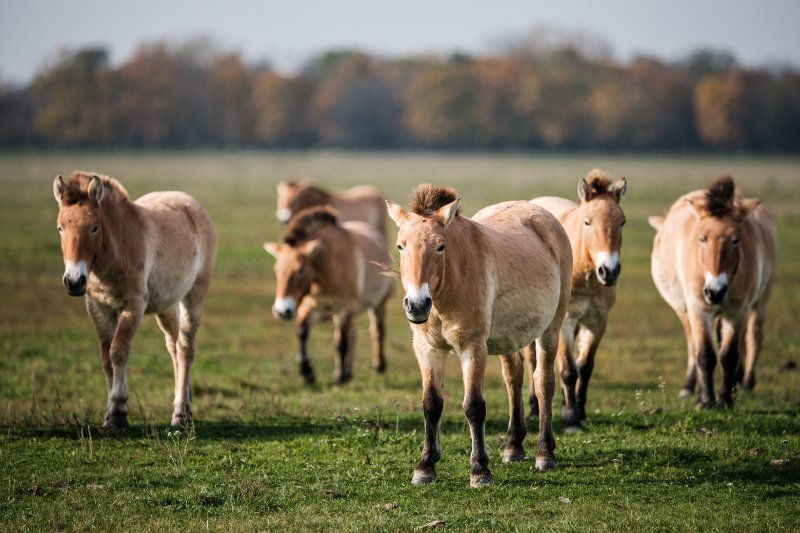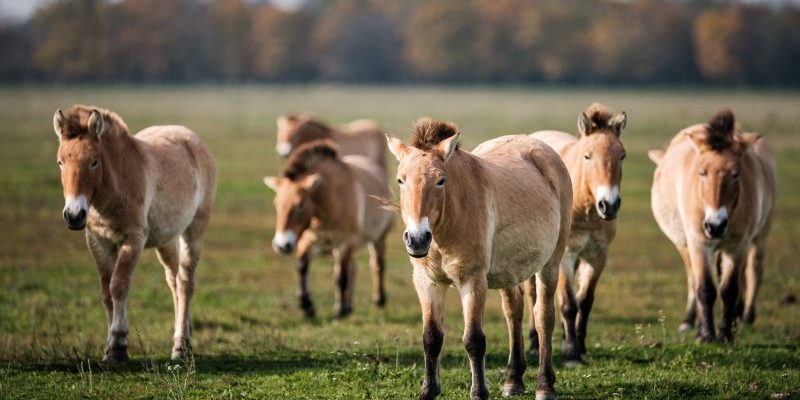
Understanding Przewalski’s horse starts with its impressive background. Unlike domesticated horses, which we’ve bred over thousands of years, the Przewalski’s horse has remained relatively unchanged. It’s a resilient animal, built to survive in harsh environments, and it often roams in herds. While they’re not typically aggressive, their wild nature can lead to moments of danger, especially in certain situations. So, grab a cup of coffee, and let’s dive into what makes this horse tick and whether it poses any threat to us humans.
What Is the Przewalski’s Horse?
The Przewalski’s horse was named after Nikolai Przewalski, a Russian explorer who first described the species in the late 19th century. These horses are unique in appearance, with a stocky build, a short mane, and a distinctively robust body. They’re usually tan or light brown, with dark stripes on their back, and they stand about 12 to 14 hands high—just slightly smaller than your average riding horse.
Their natural habitat is primarily in the steppes of Mongolia and parts of China. These regions are often characterized by harsh weather, so the Przewalski’s horse has adapted well, relying on its instincts and herd behavior for survival. It’s important to remember that these horses are not domesticated. They live in the wild and follow their social structures, which can make their behavior unpredictable.
You might be curious how they interact with their environment. Przewalski’s horses are primarily grazers, munching on grasses and other vegetation. They are social animals, forming tight-knit groups that consist of a dominant stallion, several mares, and their offspring. This social structure plays a crucial role in their survival, but it can also lead to conflicts when humans come into the picture.
Are Przewalski’s Horses Aggressive?
While it’s essential to recognize that Przewalski’s horses are not inherently aggressive, their wild nature can drive them to act defensively in certain situations. For example, if a human approaches a herd too closely, especially if there are foals (young horses) present, the adult horses may respond aggressively to protect their young. Honestly, just like any wild animal, they can feel threatened when people invade their space.
Przewalski’s horses have powerful kicks and can bite if they feel provoked. While encounters with humans don’t typically lead to harm, it’s wise to respect their boundaries. Imagine a mother bear protecting her cubs; you wouldn’t want to get too close, right? The same logic applies here.
It’s worth noting that most interactions between these horses and humans occur in reserves or zoos. While they can be majestic to watch, keep a safe distance. Understanding their body language can help; if they seem agitated or start to stamp their hooves, it’s best to back off. Here’s the thing: respecting wildlife is key to ensuring both their safety and ours.
How Do They Behave Around Humans?
Przewalski’s horses are generally shy and wary of humans, which is a natural instinct for wild animals. They’ve adapted to avoid threats, and their interactions with humans will often be limited. In wildlife reserves or conservation areas, you might see them from a distance, grazing peacefully or moving through their habitat, but getting too close can create stress for them.
In zoos or breeding programs, these horses may show more curiosity because they’ve been exposed to human presence. Nonetheless, it’s important to remember that they are still wild animals at heart. Even in these controlled environments, their instinctual behaviors remain intact.
When humans attempt to engage with Przewalski’s horses, misunderstandings can occur. Some might think they can approach these creatures casually, but that’s not the case. Just because they seem more comfortable around people doesn’t mean they’ve lost their wild instincts. Observing from afar is always the best policy.
Potential Risks in Close Encounters
You might be wondering what could happen if a person gets too close to a Przewalski’s horse. While serious injuries are rare, they can happen, especially if the horse feels cornered or threatened. Some common scenarios include:
- Protective behavior: As mentioned earlier, adult horses may become aggressive if they feel their young are in danger.
- Territorial disputes: Males can be territorial, especially during mating season. If a person inadvertently wanders into their space, it might lead to aggressive displays.
- Fear responses: A startled horse might bolt, which can lead to accidents for both the horse and nearby people.
So, what should you do if you find yourself in the presence of these magnificent animals? The best approach is to observe from a safe distance. Use binoculars or a camera with a zoom lens to appreciate their beauty without putting yourself or the horse in danger.
Conservation Efforts and Human Safety
Conservation programs have played a vital role in preserving the Przewalski’s horse. They were once thought to be extinct in the wild but have made a remarkable comeback due to various breeding and reintroduction efforts. These initiatives aren’t just about saving a species; they also focus on educating the public about coexistence with wildlife.
Many organizations now provide guidelines for safely observing Przewalski’s horses in their natural habitat. Here are a few tips to keep in mind:
- Stay at a distance: Use binoculars to observe without getting too close.
- Visit reputable reserves: Choose locations that prioritize animal welfare and provide proper education about interactions.
- Follow guidelines: Always adhere to the rules set by wildlife management and conservation programs.
By respecting these guidelines, you’ll not only stay safe but also contribute to the overall well-being of Przewalski’s horses and their habitats.
Final Thoughts on Przewalski’s Horses and Human Safety
In summary, while Przewalski’s horses can exhibit defensive behaviors if threatened, they are usually not a danger to humans. Understanding their nature and respecting their space is crucial. Remember, these magnificent creatures have survived for thousands of years on their own, and it’s our responsibility to appreciate and protect them without intruding on their wild lives.
Next time you find yourself fascinated by these horses, take a moment to admire their resilience and wild spirit from a distance. The more we learn about Przewalski’s horse, the better we can coexist with this remarkable species. Ultimately, fostering respect for wildlife is key to ensuring safety—for both humans and animals alike.

